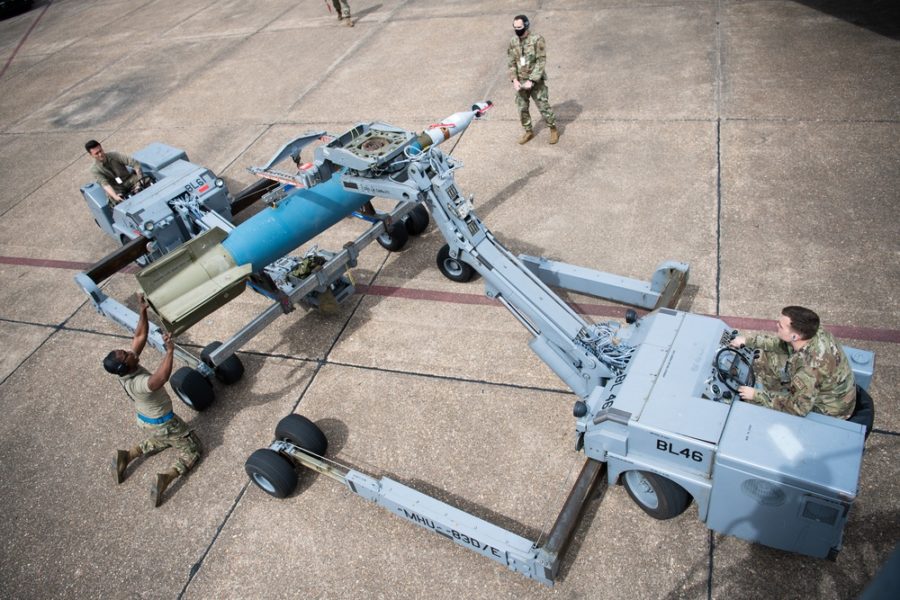Paveway II is a laser-guided, free-fall bomb for use against surface targets at short to standoff range.
The kit is a folding-wing version of the earlier fixed-wing Paveway I with seeker and reliability improvements.
The recent Paveway II Plus adds a modernized, more precise guidance package. GBU-10 is the Paveway II seeker and tail kit mounted on a 2,000-lb general-purpose bomb and primarily used against non-hardened targets. It is, however, capable of penetration.
The GBU-12 uses a 500-lb bomb body and is primarily used against stationary armored targets.
GBU-49 is also a 500-lb body, but adds GPS guidance for all-weather precision delivery from 2,500 ft up to 40,000 ft. GBU-49 currently provides the F-35A an interim moving target capability until its Block 3F software is fully fielded. An F-35 dropped the weapon for the first time in a test at Eglin on Nov. 7, 2018, and operational testing is being conducted at Nellis.
Contractors: Lockheed Martin; Raytheon.
First Flight: Early 1970s.
IOC: 1976.
Active Variants: •GBU-10. Laser/GPS guided 2,000-lb bomb. •GBU-12. Laser guided 500-lb bomb. •GBU-16. Laser guided 1,000-lb bomb. •GBU-49. Laser/GPS guided 500-lb bomb.
Dimensions: Span 5.5 ft, length approx. 14.8 ft, diameter 18 in (GBU-10); span 4.4 ft, length 10.8 ft, diameter 11-18 in (GBU-12/49).
Performance: CEP 29.7 ft, range 9.2 miles (GBU-10); CEP 29.7 ft, range about six miles (GBU-12/49).
Guidance: Semi-active laser.
Warhead: Mk 84 bomb 2,000 lb (GBU-10); Mk 82 500-lb blast/fragmentation bomb (GBU-12/49).
Integration: A-10, B-1B, B-52, F-15E, F-16C/D, F-35 (GBU-49), MQ-9.
